Efficacy in adults with Huntington’s disease chorea
SELECT EFFICACY ENDPOINT:
TMC reduction
TMC response
CGI-C/PGI-C
TMC reduction
TMC reduction
TMC response
CGI-C/PGI-C
Proven Huntington’s disease (HD) chorea control: Rapid and sustained chorea reductions observed with INGREZZA as early as Week 2 and through Week 121,2
Mean change in Total Maximal Chorea score over time1,2


INGREZZA
REDUCED CHOREA
SEVERITY BY
~40%
FROM BASELINE TO END
OF TREATMENT1-3*
*Post hoc analysis.
aP<0.0001. |
Baseline is the average of screening and Day –1 assessments; end of treatment is the average of Week 10 and Week 12 assessments. |
TMC, Total Maximal Chorea; SEM, standard error of mean; LS mean, least squares mean. |
STUDY DESIGN
TMC SCALE INFORMATION
aP<0.0001. |
Baseline is the average of screening and Day –1 assessments; end of treatment is the average of Week 10 and Week 12 assessments. |
TMC, Total Maximal Chorea; SEM, standard error of mean; LS mean, least squares mean. |
Nearly half of patients saw a >40% reduction in Huntington’s disease (HD) chorea severity with INGREZZA3,†
Distribution of percent change in TMC scores from baseline to end of treatment3


STUDY DESIGN
TMC SCALE INFORMATION
| † | Post hoc analysis included patients who had a baseline and an end of treatment TMC score (n=112). |
Baseline is the average of screening and Day –1 assessments; end of treatment is the average of the Week 10 and Week 12 assessments. |
|
Greater than 80% of subjects were at the 80 mg dose at the end of the 12-week treatment period. |
|
TMC, Total Maximal Chorea. |
|
Physicians and patients reported significant improvements in overall chorea symptoms1,2
More physicians and patients rated overall symptoms of chorea as “very much improved” or “much improved” with INGREZZA® (valbenazine) capsules vs placebo at Week 121,2


CGI-C response rates‡
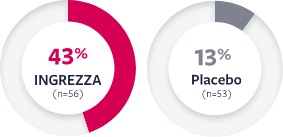
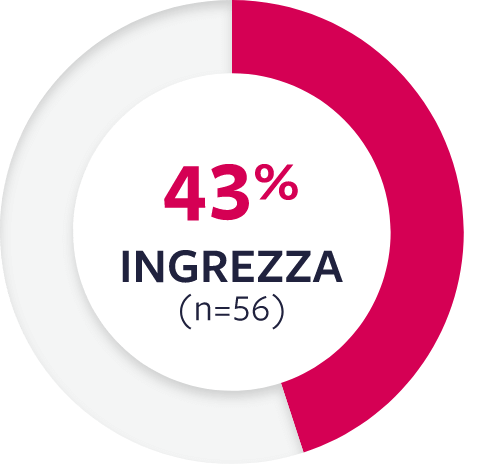
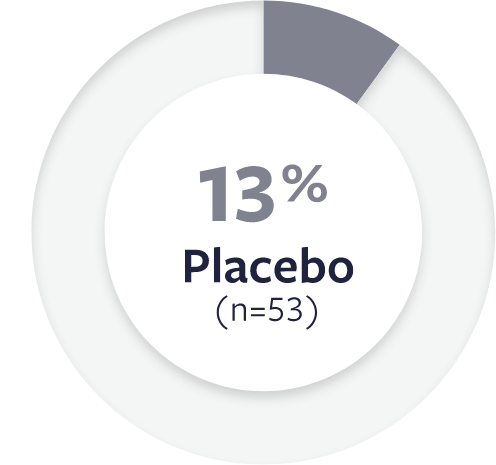
P<0.001.
PGI-C response rates‡
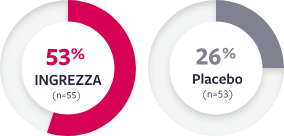
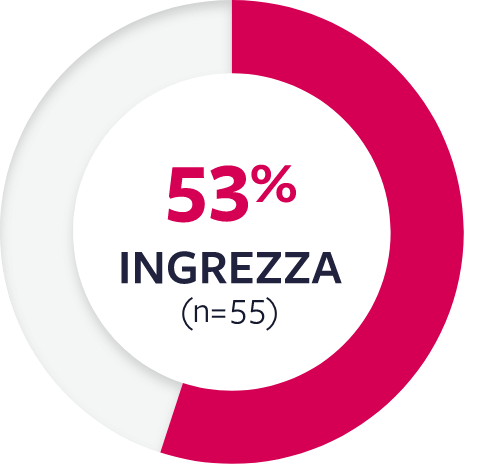
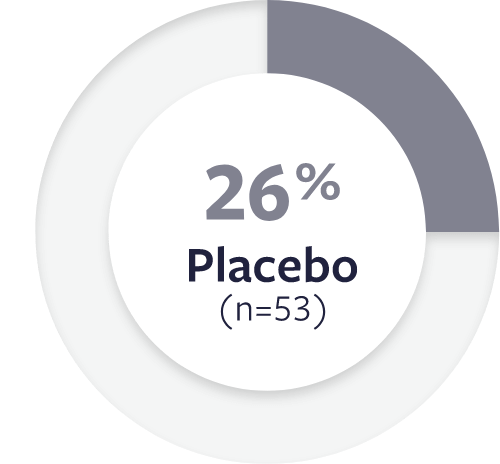
P<0.01.
STUDY DESIGN
CGI-C/PGI-C INFORMATION
| ‡ | Response was defined as “very much improved” or “much improved” at Week 12. |
CGI-C, Clinical Global Impression of Change; PGI-C, Patient Global Impression of Change.
| ‡ | Response was defined as “very much improved” or “much improved” at Week 12. |
CGI-C, Clinical Global Impression of Change; PGI-C, Patient Global Impression of Change.
STUDY DESIGN
CGI-C/PGI-C INFORMATION
Watch expert perspective videos on INGREZZA
Featuring Steven Lo, MD; Lawrence Elmer, MD, PhD; Bisena Bulica, DO
These videos were sponsored and developed by Neurocrine Biosciences.
The speakers are paid consultants of Neurocrine Biosciences.
About the KINECT-HD pivotal study

Efficacy and safety of INGREZZA in patients
with HD chorea

THERAPEUTIC DOSE FROM DAY 1
The only VMAT2 inhibitor that offers an effective starting dosage you can adjust based on response and tolerability1
DOSING INFOSEE PATIENT CASES
FROM KINECT-HD
View videos of clinical trial patients with HD chorea treated with INGREZZA
CASE VIDEOSINGREZZA CLINICAL
SAFETY DATA
INGREZZA was studied across a broad range of patients with HD chorea
SAFETY PROFILEREFERENCES:
- INGREZZA [package insert]. San Diego, CA: Neurocrine Biosciences, Inc.
- Stimming EF, Claassen DO, Kayson E, et al. Safety and efficacy of valbenazine for the treatment of chorea associated with Huntington’s disease (KINECT-HD): a phase 3, randomised, double-blind, placebo-controlled trial. Lancet Neurol. 2023;22(6):494-504.
- Data on file. Neurocrine Biosciences, Inc.
- Unified Huntington’s Disease Rating Scale: reliability and consistency. Huntington Study Group. Mov Disord. 1996;11(2):136-142.
- Guy W. ECDEU Assessment Manual for Psychopharmacology. Revised 1976. Rockville, MD: National Institute of Mental Health; 1976.








